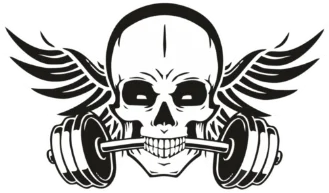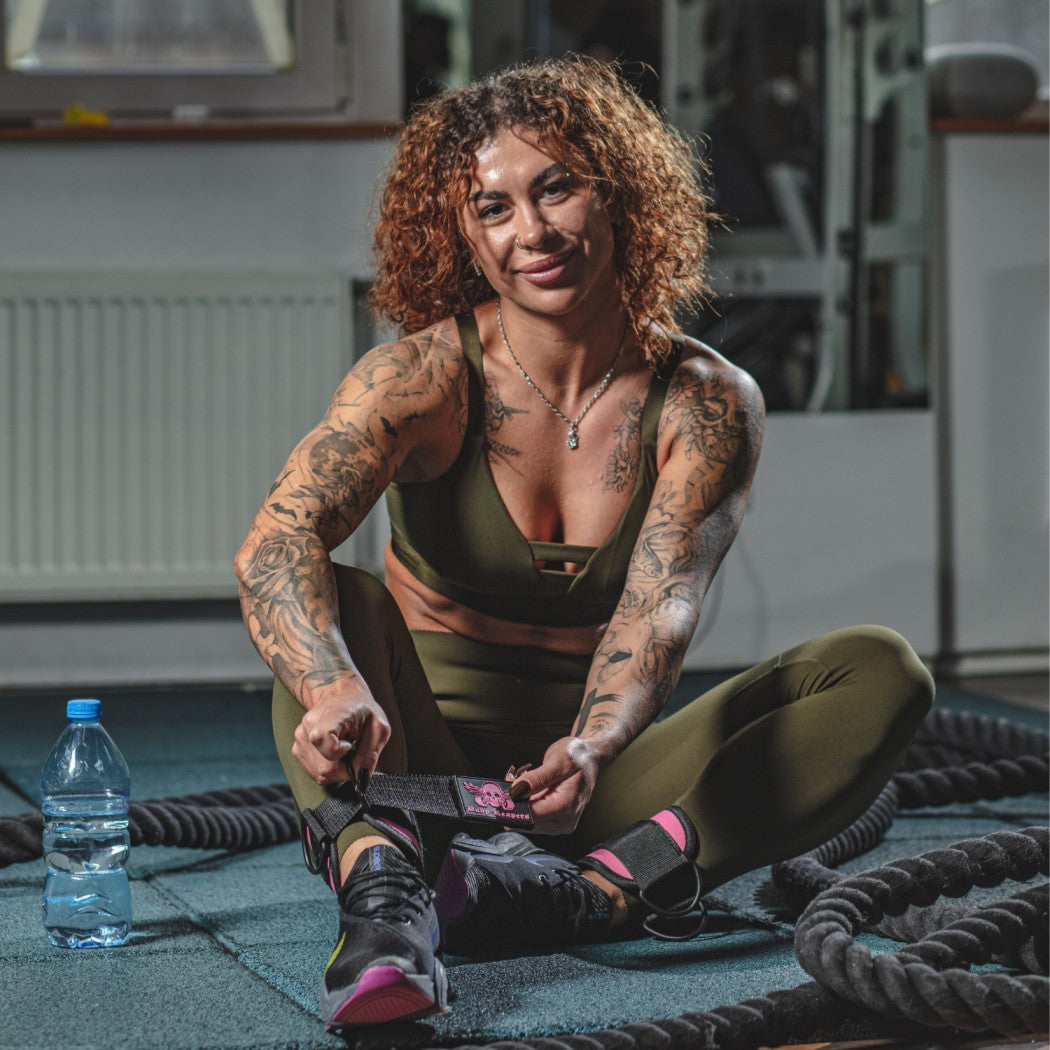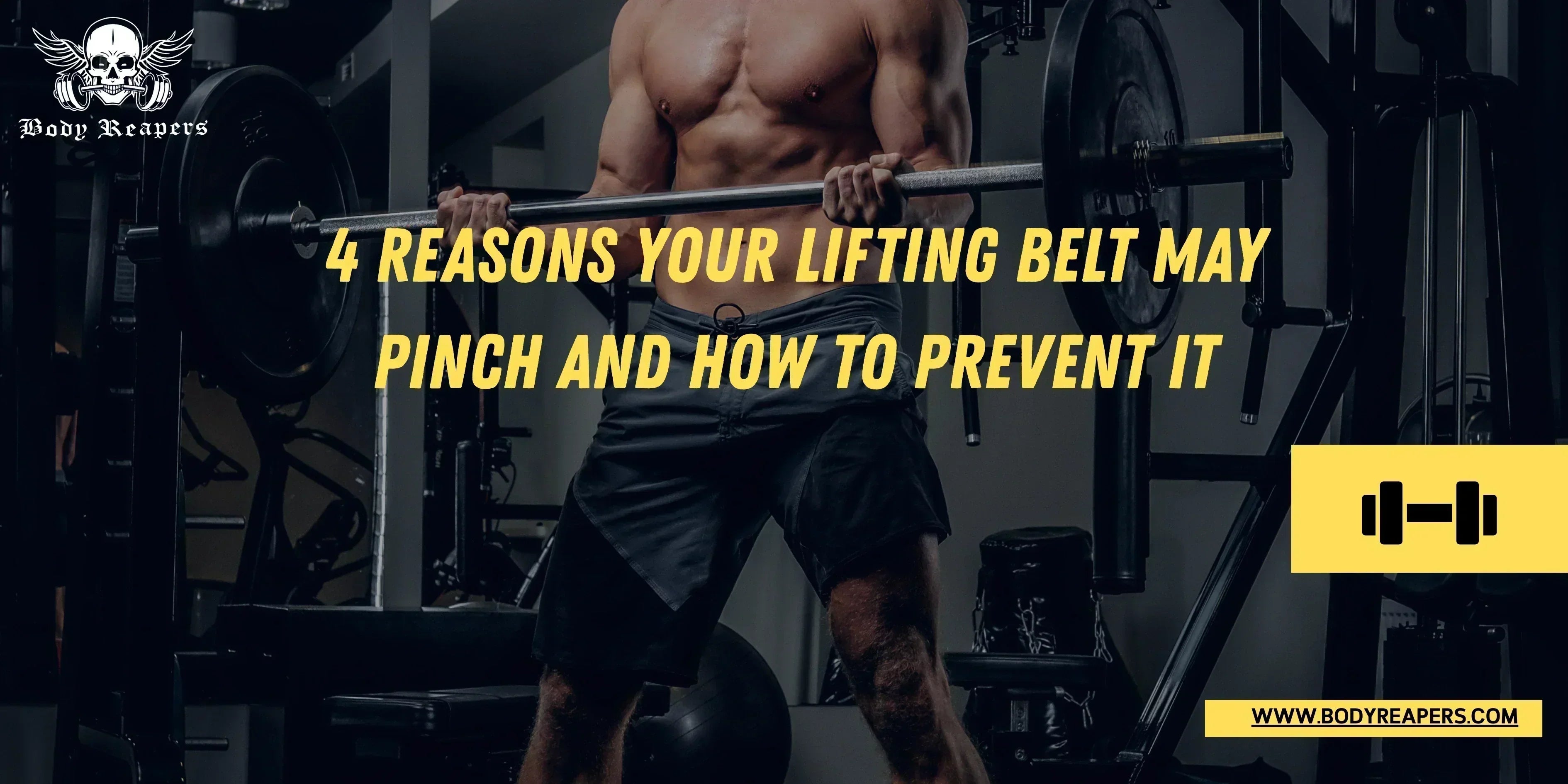The Ultimate Guide to Choosing a Weightlifting Belt
When it comes to different types of lifting belts, the material plays a significant role in the overall support, comfort, and performance during your lifts. Several different materials are used in lifting belts, each providing unique benefits depending on your training style. This guide will break down the 5 most common materials used in lifting belts, helping you choose the best one based on your needs.
What Are The Different Types of Lifting Belts?
Lifting belts are made from various materials to cater to the different needs of lifters. The type of material used will influence the belt's flexibility, durability, and support level. Let's take a closer look at the five primary materials used in lifting belts:
Bodybuilding Belts
Bodybuilding belts support lifters back during compound lifts, like squats and deadlifts. These belts offer both rigidity and some flexibility, allowing bodybuilders to perform exercises requiring dynamic movement while providing core support.
Top Picks:
- Best Leather Belt for Heavy Lifts: 10mm Single Prong Belt
- Best All-Purpose Belt: Quick Locking Weightlifting Belt
- Best Tapered Leather Belt: Leather Weightlifting Belt
These bodybuilding belts typically offer a balanced combination of rigidity and comfort, making them ideal for heavy lifting sessions and long-duration workouts.s.
Powerlifting Belts
Powerlifting belts are typically made from leather and are built for heavy lifting, especially during squats, deadlifts, and bench presses. These belts offer maximum rigidity and support, which are crucial for ensuring optimal form and power transfer when lifting maximal loads.
Top Picks:
- For Everyday Powerlifting Use: 10mm Single Prong Belt
- For Competitive Powerlifters: 10mm Lever Belt
- For Serious and Advanced Powerlifters: 13mm Lever Belt
The rigidity of powerlifting belts ensures that lifters maintain solid posture and stability, helping prevent injuries during extremely heavy lifts.
Olympic Weightlifting Belts
Olympic weightlifting belts are typically made of leather or nylon. These belts are designed to provide support while allowing for maximum mobility, which is crucial for movements like the clean and jerk or snatch. The flexibility of these belts helps weightlifters move through deep squats and overhead lifts.
Top Picks:
- Best Nylon Belt: Quick Locking Weightlifting Belt
- Best Tapered Leather Belt: 7mm Tapered Weightlifting Belt
Olympic weightlifting belts are ideal for athletes who need flexibility for dynamic lifts while still maintaining support during heavy squats or overhead pressing.
CrossFit Belts
CrossFit belts are versatile and often made from nylon to provide both flexibility and comfort. They are designed for quick adjustments between various exercises and can be worn throughout a variety of functional movements.
Top Pick:
Best Overall CrossFit Belt: Quick Locking Weightlifting Belt
CrossFit belts allow for increased mobility and can be adjusted quickly between sets, making them ideal for high-intensity training athletes.
Dip & Pull-Up Belts
Dip and pull-up belts are a specialized type of lifting belt used for adding external weights to bodyweight exercises like pull-ups and dips. They have a chain that allows for the attachment of weight plates, providing progressive resistance for these movements.
Top Pick:
Best Dip & Pull-Up Belt: Dip Belt

Dip and pull-up belts are designed to help athletes increase their strength in bodyweight exercises by adding additional weight to the movement.
Choose the Right Material Based on Your Lifting Style
When choosing a lifting belt, the material is crucial in determining the support and flexibility you need. Powerlifters, for example, may prefer leather belts for their rigidity, while Olympic weightlifters may opt for nylon belts for greater flexibility. The right material can make a big difference in the effectiveness of your training, providing support when needed and allowing unrestricted movement in other exercises.
Belt Material: Leather vs. Nylon
- Leather: Provides more rigidity and is ideal for powerlifters and heavy lifting.
- Nylon: Offers greater flexibility, making it suitable for athletes who need a balance of support and movement.
Key Factors to Consider When Choosing a Belt
Belt Width
The width of the belt determines the level of support it provides. A wider belt typically offers more support for your lower back and core. For most lifters, a 4-6 inches width is ideal, but you can choose based on personal preference and the lifting you do.
Thickness: 10mm vs. 13mm
The thickness of the belt plays a key role in its rigidity. A 10mm belt provides moderate support, while a 13mm belt offers maximum rigidity for heavy lifting. If you're starting, a 10mm belt might be sufficient, while advanced lifters may prefer the extra support of a 13mm belt.
Choosing Between Prong Belts, Lever Belts, and Powerlifting Belts
Lifting belts come with different fastening mechanisms, each offering distinct benefits. Prong belts are adjustable, allowing for a customizable fit. Lever belts offer maximum stability but are less adjustable. Powerlifting belts are typically leather, providing rigid support for heavy lifts.
| Type | Best For | Pros | Cons |
|---|---|---|---|
| Prong | Bodybuilding, general use | Adjustable, secure | Harder to tighten mid-set |
| Lever | Powerlifting | Max support, easy on/off | Requires tools to adjust |
| Velcro | CrossFit, HIIT | Quick adjustments | May loosen over time |
| Ratchet | Olympic lifting | Secure, adjustable | More expensive |
Tips for Getting the Most Out of Your Weightlifting Belt
To make the most of your lifting belt:
- Use it for Maximal Lifts: Only wear your belt during heavy lifts, such as squats, deadlifts, or bench presses.
- Adjust Properly: Ensure your belt fits snugly around your waist but doesn't restrict breathing.
- Choose the Right Belt for Your Training Style: Select a belt based on your specific lifting needs (powerlifting, Olympic weightlifting, CrossFit).
By understanding the different materials, styles, and factors, you can choose the best lifting belt for your needs. Whether you're a powerlifter, Olympic weightlifter, or a CrossFit enthusiast, the right belt can enhance your performance, reduce the risk of injury, and help you lift more efficiently.




Leave a comment
This site is protected by hCaptcha and the hCaptcha Privacy Policy and Terms of Service apply.